We love our favorite goat harness for farming and walks! It is comfortable, stylish, and perfect for our goats. The harness is made with a durable fabric that is resistant to dirt and scratches. Plus, the straps are adjustable to ensure a snug fit. The harness also has a clip that can be attached to a leash or belt for easy transport. Our goats love being able to explore their surroundings freely while wearing this harness, and we are so happy that it has made both of our lives easier!

As every goat farmer knows, goat harnesses are very handy. However, while it may seem like it, not just every harness is suitable for your goat. To get the best out of your livestock, the appropriate goat harnesses must be used to avoid damage or injuries to the goat. You should keep a lookout for the correct goat harness and study its various methods of use so that you and your goat can enjoy a very long-lasting and productive partnership.
Leashes, tethers, and upended ropes are some of the types of harnesses observed to be common among goat farmers. However, these seemingly cheaper and more available tools negatively impact the development and well-being of your animals. It’s also important to know that there are different types of goat harnesses for different activities. This article is going to provide information about the right kind of harness for your goat and how to put them to use for farming or taking your goat out for a walk. If you’re looking for a complete goat starter guide we also have a great article and resource as well.
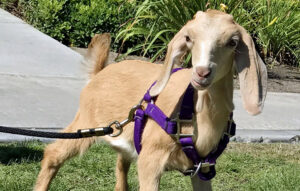
How To Use A Goat Harness
Buy new goat hardness that work great here
Most people can relate to using a goat harness as it is very similar to using one for their pet dog. Below are the top 5 steps in making sure your goat harness is secure and does hurt or give your goat discomfort.
1. Choose The Correct Harness For Your Particular Use
As stated earlier, there are different types of harnesses that are necessitated by different purposes and their peculiarities. If you want to use your goat to pull carts or wagons when working on your farm, to drive it around while also being able to carry the cart or wagon, there is a goat harness for it. Therefore, the very first step in harness use is choosing the right one. This can make a huge difference when making your selection. We have seen many beginner goat owners cheap out when owning a harness and decide to use 1 single harness as their “goto” harness.
2. Examine Your Goats Skin
This may seem like an obvious step to do for most. Often times I have found either a small skin abrasion or even one time I noticed a small tick was attached to my goat just under the harness. You will obviously want to remove these before attaching any kind of collar or harness. This is necessary because irritation is a major problem for goats. When irritated your goat will become less obedient and its behavior will become much more irritable.
3. Ensure That The Harness Does Not Trap The Ears
Some amateur farmers do not care about proper harness installation. While putting a harness on a goat, it is important to note where the harness is resting. Be sure that the is free from trapping the goats ears under one of the harness’s straps. I have even seen a slightly loose harness grab a goats ear during use even though the harness was secure when putting it on.
4. Secure The Harness But Not Too Tight
Examine for slackness, and make sure to slide the straps straight over the rings to put each strip firmly in the place where it is meant to be. For a cart or wagon pulling goat, this is specifically important. A wagon pulling goat may tread up a hill with a load or run down a steep one, therefore, its harness must be pulled up tight and secure. Failure to spot slacks and tighten them might cost the goat an injury depending on the task and deprive the owner of being able to continue work.
5. Never Pull The Harness Straight Back
When a farmer is pulling a goat on a harness, it is generally best to slightly ease the reins or collar up rather than yanking them straight back. The sudden jolt may cause the goat to momentarily become disoriented.
Tips On Teaching Your Goat To Go On Walks
Use these tricks to create walks more exciting and enjoyable.
Never allow the goat to lead you
Goats like it to lead. If you let it have its way, it will try to drag you in the direction it wants to go. This is why, in the first step, you allow it to throw tantrums, twist and turn rebelliously, then firmly try to bring it back to its social manners.
Walk a few steps then pull on the harness
The technique used to train a goat to walk can be improved by simple methods farmers often disregard. When dragging the goat from the leash the instant it approaches, it discovers this as agitation and responds accordingly. However, if you pull on it from behind first, let it take the initiative before directly pulling on the leash, it will make the entire process much smoother. We recommend that for the first few days you let it practice walking on its own and only start pulling on the leash after it is accustomed to this new experience.
Only stop a few steps after the goat has stopped.
The next tip also comes into play. You have to make it known that there is more to come. As a result, you need to add several actions while it is halted. This also supports you because that additional action will help lengthen the leash on reaching the finish, and this will keep it from straying from you. This is also a great way to make it more comfortable for both you and your goat. To avoid possible tangles, we recommend that you turn the leash often, especially when walking. Do not pull on the leash as much as you would with other animals.
Increase the walk time only gradually as the lesson progress
At first, a goat that has never undergone any training may be able to move three to four steps, except in exceptional cases. However, you don’t have to rush it. To teach a goat how to go on a walk, you will need to have patience in bulk, training a goat requires patience and not a little of it.
Therefore, you have to exercise patience as you make progress from the baby steps to a trained goat that can go on a walk.
Offer rewards intermittently
Goats love rewards and praise, therefore make sure to give it to them whenever they achieve or accomplish a task. They love lovely pats on the back and hair brushing. This can even create bonding as scientists recently claimed and it will aid you immensely in getting the best out of your goat.
Therefore, after a few steps into the process, or reaching a certain destination, it is recommended that you reward your goat as this will go a long way to spur it on to walk for you.
Once every five steps, widen its legs to assume the proper walking posture
As much as possible, try and make sure to stop and widen his legs so that it will always assume a correct walking posture.
Make the walk a routine and a consistent part of your schedule
It is necessary to continue the process till the goat has mastered going on a walk. If the training is erratic, the goat may never come around to grasping the whole etiquette of going on a walk. Therefore, a schedule should be drawn to ensure maximum efficiency.
How To Protect Yourself On A Goat Walk
Goats ordinarily are aggressive, therefore here are a few tips to keep in mind to protect yourself when taking a goat on a walk.
- Always make sure the head is up. If it lowers its head make sure to always pull it up. This is because most times when a goat lowers its head, it is preparing to charge. It is no longer comfortable with being led around. If their head is down it may also get startled by others out walking or even loose animals.
- Trim the hooves. The hooves are powerful protective instruments that goats possess. It is advisable to trim your goat’s hooves before commencing training. This is so that danger can be avoided when you are trying to position your goat’s legs right during work.
- Be alert. When leading goats to territories unfamiliar to them, you must become alert as goats always become tense when in unfamiliar surroundings and can become violent without any warnings.
Harness vs Collar
These are some of the advantages and disadvantages of harnesses and collars
Pros of a Harness
- It spreads the pressure to other parts of the goat. It does not concentrate pressure on the neck region as the collar does.
- A harness allows for more comfort on the goats’ part. It does not apply pressure on the goat, if it stops, wriggles, and wants to be physical. It controls the limits of the animal gently.
- A harness helps not to give the goat the impression that it is being pulled or dragged. This makes the goat more obedient and less violent.
Cons Of A Harness
- It is generally complicated. Harnesses are complicated. Strapping and buckling in many places makes it a time-consuming process.
- May take time for the goat to get used to a harness. Some goats take to harnesses more than others. However, it takes a longer time for a goat to get used to a harness than a collar.
Pros of a Collar
- Easy to wear. Slipping the collar over the neck of the animal is not a big deal. It’s way faster than fastening and strapping a harness around a goat.
- Comfortable for non-violent goats. It is easier to use if the goat in question is a meek type and doesn’t pull and trash often like a violent dog.
Cons of A Collar
- Collars apply a lot of pressure on the neck of the goat. This can affect the windpipe of the animal wearing it and may cause serious injuries if it is a violent type. That is why it is advised that a baby goat harness is to be used for all baby goats if need be.
- It is a generally unpopular option for goats. For one thing, goats are more comfortable with a harness than with a collar when they get used to it. So, it might pay more to help your goat get used to a harness than hang a collar around its neck.
Gearing Up Your Goat For Farming
To prepare your goats for the farming experience, there are key things that must not be left out or the experience will turn out abysmal.
- First, you must allow the goats to mature. At least the goat must be two years before being introduced to the farm.
- Secondly, you must teach your goats how to go on walks. If the goat can’t walk properly, it will be harder for them to pull a cart or be a pack goat.
- Moreover, they are supposed to have been open to affection. A goat that is open to affection and understands gestures more will be more efficient than one which isn’t. Let them create a bond with you, it will help them and also help you.
Harnesses Specifically For Your Goat
When it comes to wagon carrying, some harnesses suit different types of goats and the kind of wagons they can carry.
It is not hard for a goat farmer to find a harness suitable for his or her goats when he looks for it. Even baby goat harnesses are also out there in the market and online. It is a matter of choice.
Goat harness is not a million-dollar commodity in the market, it is relatively affordable and easy to learn how to use. Depending on the level and type of harness that is needed, price and availability may vary depending on the region. Meanwhile, the need for a goat harness is deciphered by the nature of the particular goat and the form of use it will be put into. This implies that it is not the same harness that a goat meant to pull carts will wear with a goat that is ready to go for a walk.
Also, the size and shape of a goat are considered when manufacturing a harness, therefore, you should take into account the nature of the goat, its size, and body shape.
This also means that it is not advisable to use a dog’s harness on a goat. This is because the general shape of a dog and a goat varies in certain aspects, therefore, a dog’s harness on a goat might not fit correctly or cause irritations to the goat on which it is used thereby leading to an overall bad experience.
Our Favorite Goat Harness

Easy to adjust, the Weaver Leather Goat Halter can be used in teaching your goat how to go on a walk and also draw a wagon.
Despite what some farmers may consider a bunch of tangled straps, the Multipurpose Weaver Leather Goat Halter is made to be superbly gentle on the goat wearing it.
There is a reason we chose it as our favorite goat harness. It is because no other harness suits the small, the big, and the temperamental goats like the Weaver.
Like everything else, the best product for you is that which suits your needs the most within the limit of your pocket.
Some halters are like a noose. If your goats are violent, this type of halter might do it for you. It clips around their jaws and holds them firmly to avoid snooping out from the leash.
There are also collars available. Collars will be more gentle and snug on the goat. But like earlier said, they may be more threatening to the trachea and windpipe of the goat.
However, collars also suit some goats better when they go on a walk, mostly those of a specific breed.
That is why when choosing a halter, the nature of the goat must be first considered before anything. Consider his previous behavioral traits and tendency to go rebellious.
Can You Use A Dog Harness On A Goat?
It is not advisable. Though some do try it, it is not remotely the ideal or right thing to do. While a dog and a goat may look alike in the sense of shape and size, there are key differences in their physiques that make it unsuitable to inter-user harness between them.
A dog’s chest area and streamlined body are different from that of a goat, therefore, a harness that might appear snug and cozy on a dog will most times ultimately be slacking or killing the goat while wearing it.
For instance, a pack goat that is meant to carry burdens will lose its efficiency and comfort if arranged with a dog harness.
You should only use a dog harness for your goat if you can add a butt strap to the harness. Also, tighten or readjust the front straps to hug your goat in the right way.
Can Goats Pull A Wagon?
Yes. Goats can pull a wagon. Though the load a goat can carry is dependent on the size and strength of the specific goat. In other words, a six-month-old goat will not carry the same level of load a mature two-year-old will carry.
Moreover, different breeds of goats possess different degrees of natural strength. For example, a small Swiss Alpine goat might never possess the same amount of strength as the Wild Boer, even if they are the same age.
For pack goats, most times a wagon is not needed. A pack goat harness is most common and more appropriate when utilizing pack goats.
However, there is a rule of the thumb when it comes to fixing a wagon to a goat. Before fixing a load to a goat, check the goat’s weight and then multiply it by two. This will give you the approximate weight you may allow the goat to carry, this includes the wagon.
Therefore, in full answer to the question, a goat can draw a wagon or cart, but with strict limits.

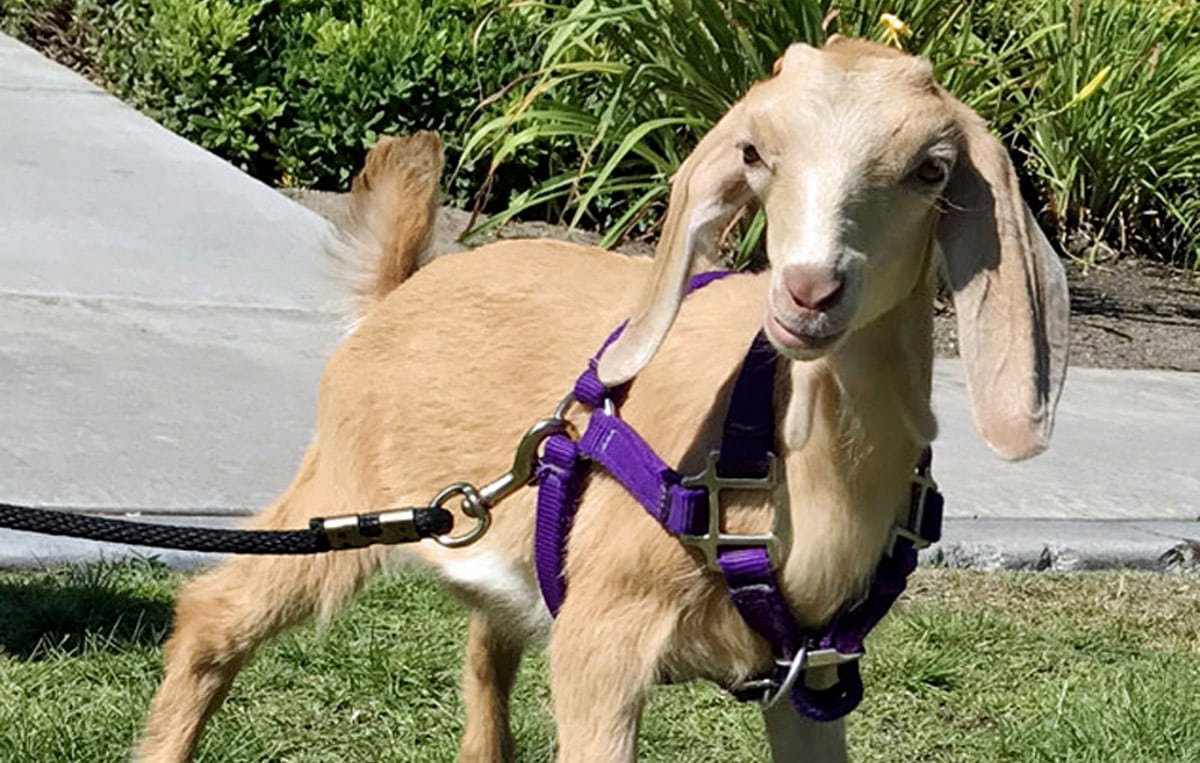
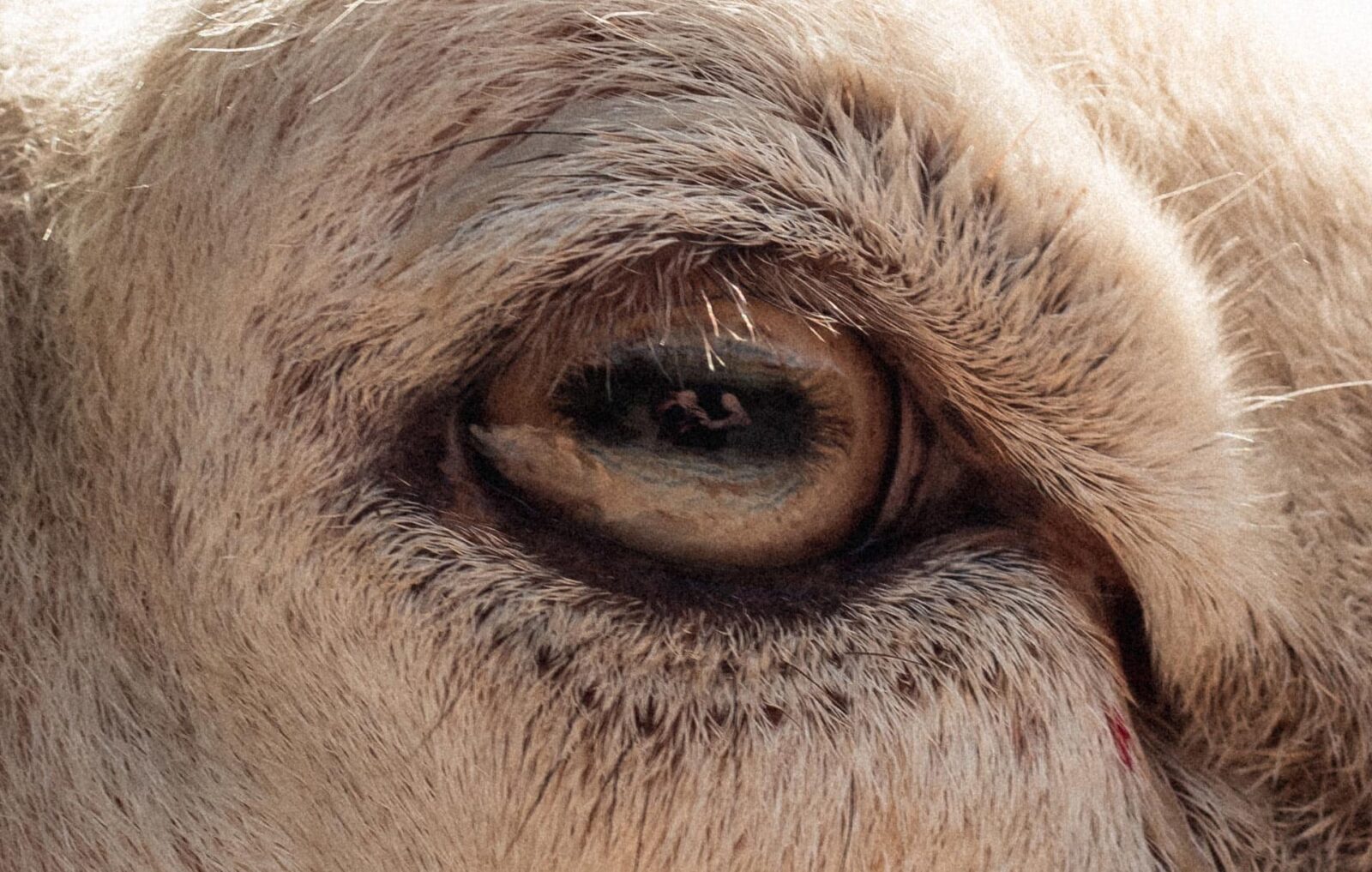
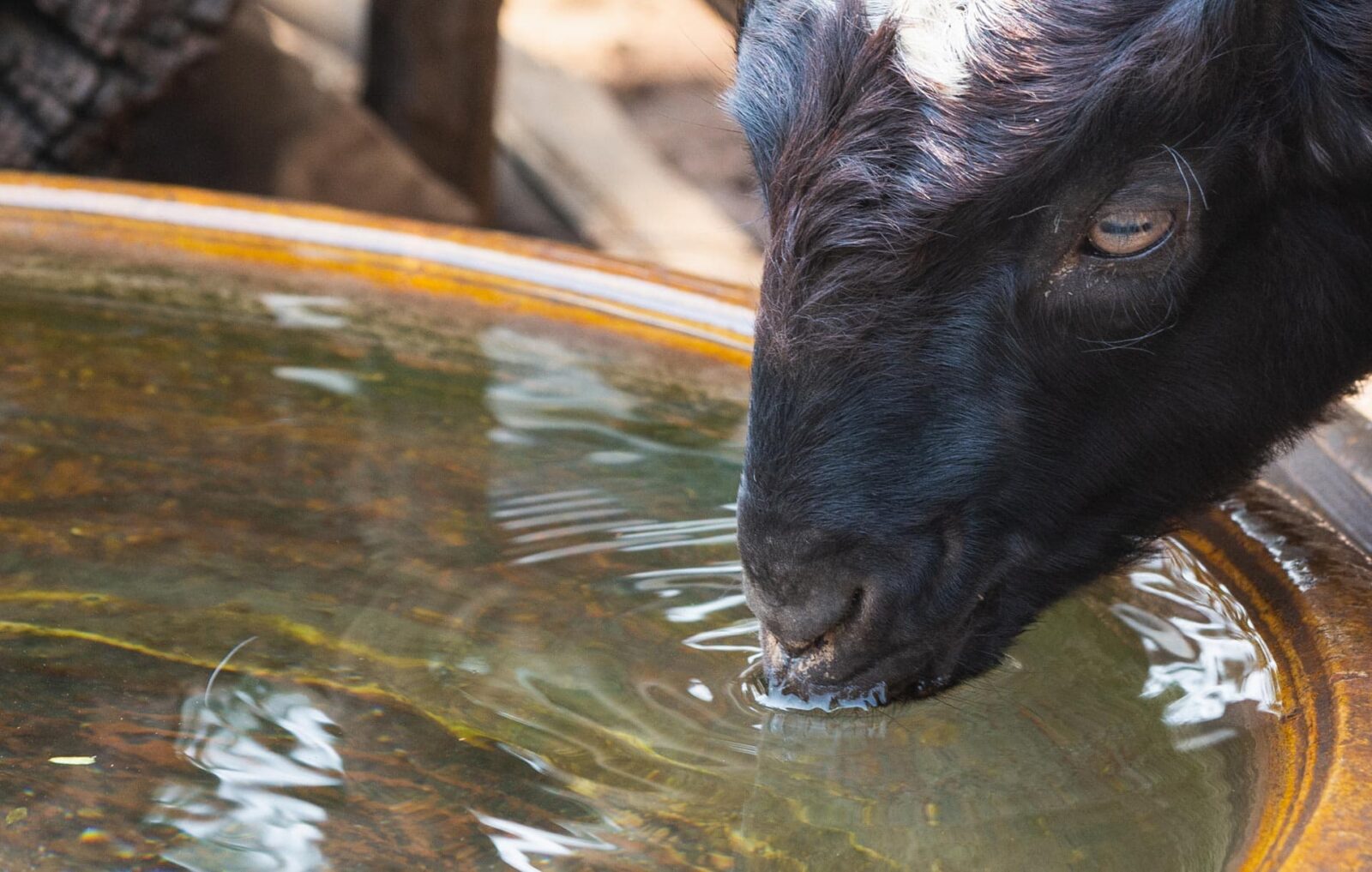

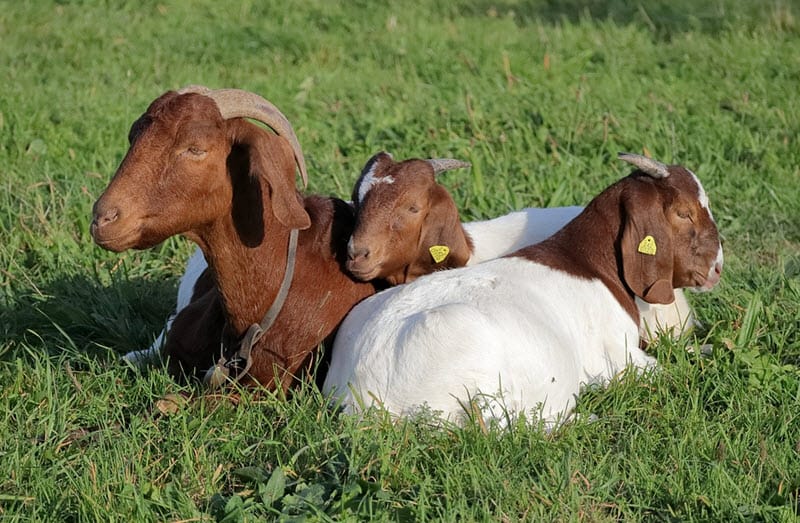
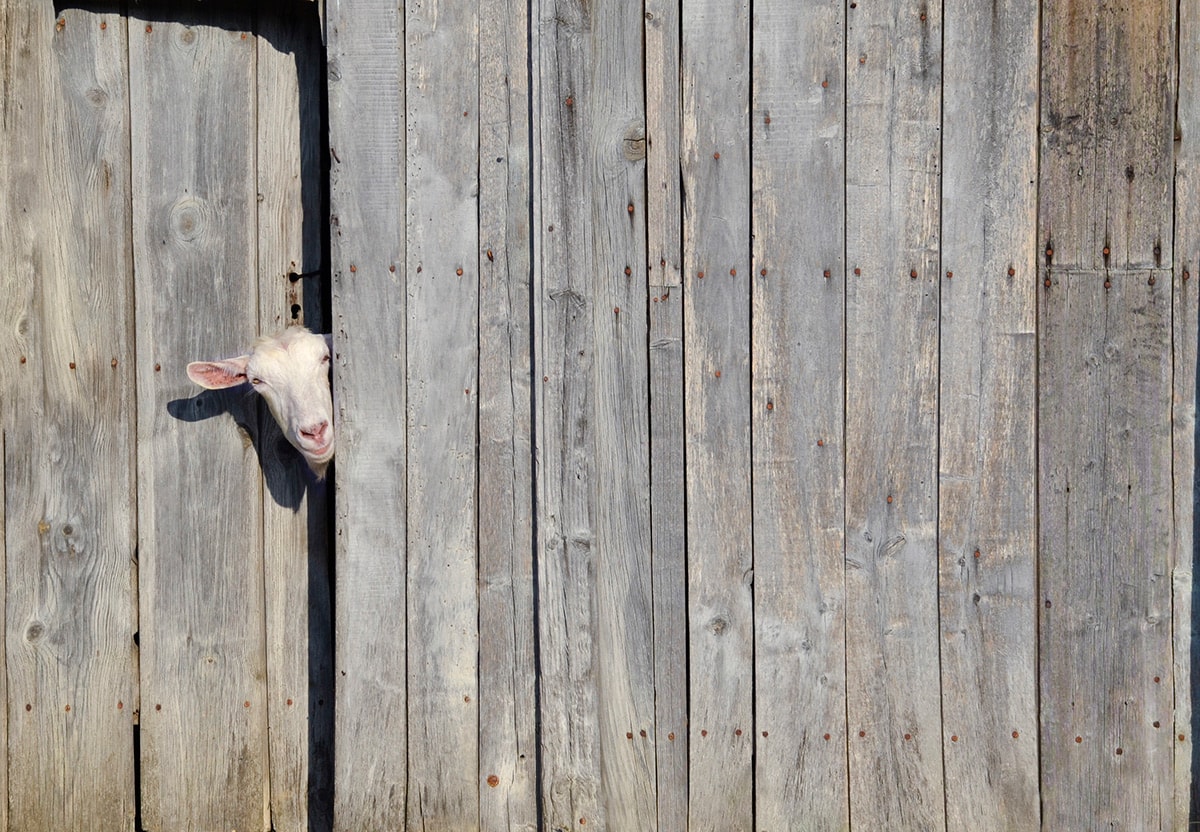

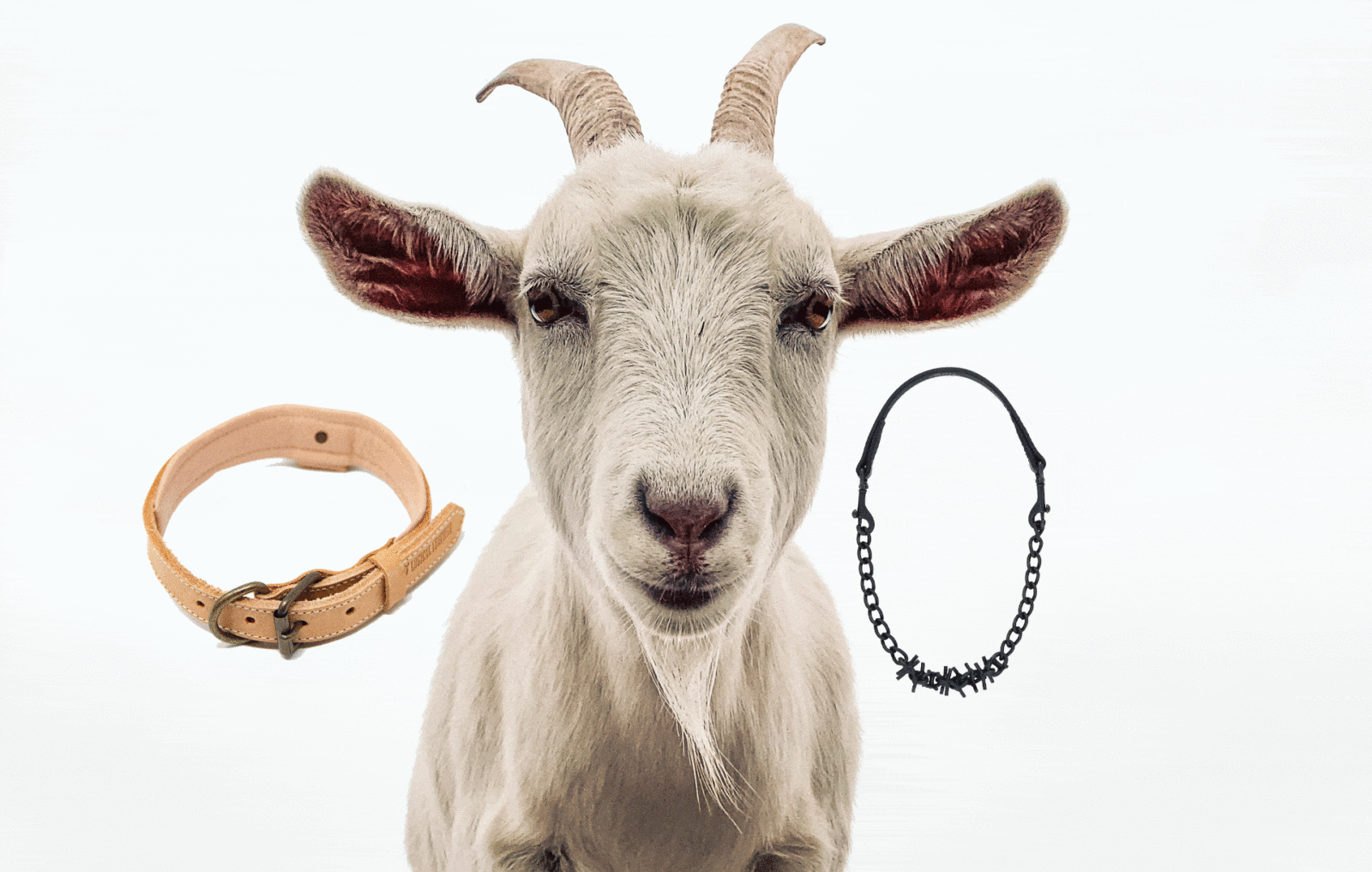


Comment (1)
Where did you purchase the harness in the photos?